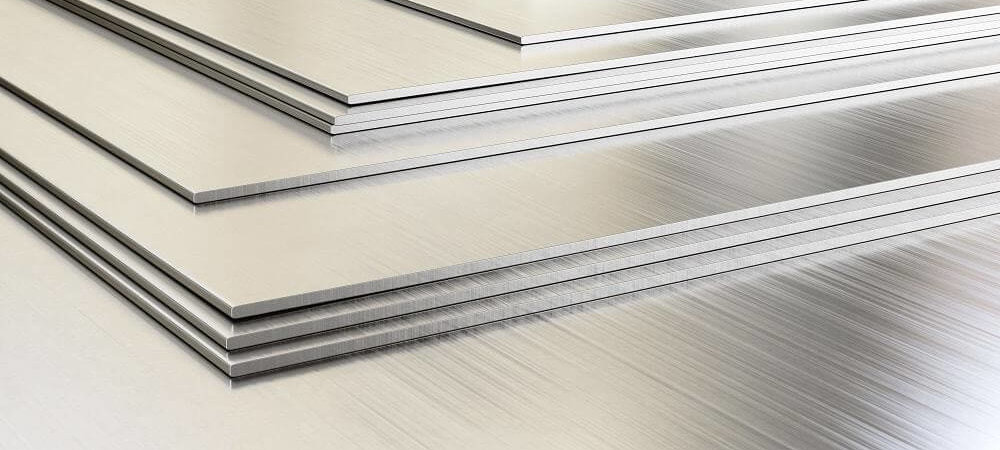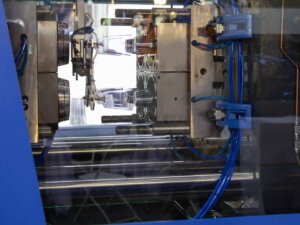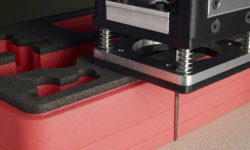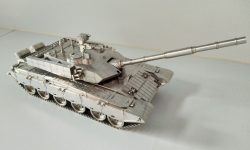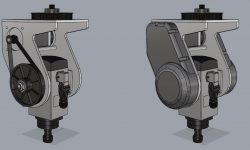Sheet metal fabrication, the practice of manipulating flat pieces of metal into new shapes, is a practical and low-cost solution for making parts like brackets, enclosures, and kitchen equipment. It is one of the most efficient ways to make very large, simple products that don’t have highly detailed features.
However, engineering successful sheet metal parts are more complicated than it looks, and one major reason for that complexity is grain. Grain affects the strength and function of sheet metal, so engineers must take care to fabricate their sheet metal parts with grain in mind; failure to do so can result in parts with critical weaknesses.
This article goes over the basics of grain in sheet metal: What is grain? How does grain size affect sheet metal parts? And how does grain direction impact the manufacturing process and the final parts?
What is sheet metal fabrication?
Sheet metal manufacturing (or sheet metal fabrication/sheet metal prototyping) is a set of manufacturing processes used to cut, deform, and assemble flat sheets of metal. These sheets — of materials like aluminum, steel, and other metals — are made into standard gauges, and manufacturers can choose a suitable material and gauge based on the requirements of the end product.
In most cases, several different processes are used to turn a standard sheet of metal into an end product. Cutting processes include punching, laser cutting, water jet cutting, and plasma cutting; deformation processes include bending, stamping, and spinning; assembly processes include welding. Deploying a sequence of these processes can turn a featureless sheet of metal into a usable part like a piece of shelving.
Sheet metal is a suitable process for simple, large, or thin-walled parts such as panels, brackets, shelving, enclosures, doors, appliances, and kitchen and office equipment.
What is grain in sheet metal?
Like most inorganic solid materials, the kind of metals used in manufacturing is in a polycrystalline state: they are solid and consist of very small crystals or crystallites of various sizes and orientations held together by thin layers of amorphous solid. These crystals — and their arrangement — are sometimes referred to as a grain.
To make sheet metal, large sections of unformed, heated metal are fed through rollers, stretching them into sheets of a uniform thickness. This rolling process elongates the various crystals in the direction of the rolling, creating what we call a grain direction: the crystals are now longer along the length of the sheet, and shorter along the long transverse (width) and short transverse (thickness). These elongated crystals have important effects on the behavior of the metal.
The mean size of each crystal, or the metal’s grain size, also affects the behavior of the metal. Grain size is affected by the rolling of the sheet metal but can also be changed in other ways.
How does grain direction affect sheet metal parts?
The direction of the grain is an important factor to consider before any sheet metal fabrication process, but especially before bending, folding, and similar deformation processes.
This is because grain direction makes sheet metal stronger in some directions and weaker in others. With many metals, bending with the grain (longitudinally) can increase the likelihood of cracking, tearing, or orange peeling, and it may therefore be preferable to bend against the grain to reduce the likelihood of these problems.
That being said, bending against the grain requires greater force, since the sheet metal is stronger, and may result in more spring-back — the degree to which the sheet metal reverts back to its original angle.
Grain direction also affects how a manufacturer might approach the nesting of sheet metal parts. For example, if a manufacturer intends to cut multiple shapes from a single sheet, they must consider how the orientation of each shape relates to the grain direction. In any case, they should try to ensure that grain direction is consistent across parts so they can, for example, apply consistent forces during bending and other operations.
How does grain size affect sheet metal parts?
The grain size of sheet metal can vary for different reasons. If it is heated for too long a time, for example, diffusion can take place across grain boundaries — the spaces between individual crystals — resulting in larger grain size.
It is important to control grain-size because it has a significant effect on the yield strength of the sheet metal. In general, a smaller grain size will result in stronger parts, while a larger grain size will result in weaker ones.
The effect of grain size upon metal strength can be explained by grain boundaries. Grain boundaries disrupt the motion of dislocations in the metal and prevent cracks, and a smaller grain size increases the number of grain boundaries in a given area, resulting in higher strength.
Grain size is determined during sheet metal rolling, but it can also be adjusted afterward through annealing or normalizing: reheating the metal to just under its recrystallization point and then allowing it to return to room temperature in the furnace (annealing) or cooled in the open air (normalizing).
3ERP is available for all sheet metal prototyping projects. Request a free quote today and get your parts delivered in just 5–10 days.
